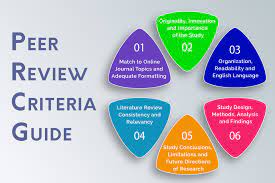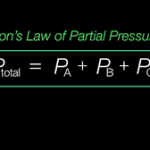When you come across an article on the latest cancer research claiming groundbreaking results, you might wonder if it’s been scrutinized by experts in the field. Understanding how to determine if an article is peer-reviewed can save you from falling for misleading information.
By knowing a few key indicators, you can confidently assess the reliability and credibility of the content you encounter. So, how can you ensure that the article you’re looking at has undergone the rigorous process of peer review?
Let’s explore some essential tips to help you navigate the world of scholarly publishing.
Importance of Peer-Review
Understanding the significance of peer-review is crucial for evaluating the reliability and credibility of scholarly articles. Peer-review is a process where experts in the field critically assess the quality of research before it gets published. This evaluation ensures that the research meets certain standards of academic rigor, accuracy, and relevance. By having peers review the work, errors and biases can be identified and corrected, leading to more trustworthy and accurate information for readers.
Peer-review also helps to maintain the integrity of academic publishing. Articles that have undergone rigorous peer-review are generally considered more reliable and credible sources of information. This process adds a layer of quality control that upholds the standards of academic scholarship. Without peer-review, the risk of publishing flawed or misleading research increases, which can harm the advancement of knowledge in a particular field. Therefore, recognizing the importance of peer-review is essential for determining the validity of scholarly articles.
Journal’s Editorial Process
To comprehend the reliability of scholarly articles, it’s imperative to understand the editorial process of journals. Journals typically follow a rigorous editorial workflow to ensure the quality and credibility of the research they publish. After receiving a submission, the journal editors evaluate the article’s suitability for the journal’s scope and adherence to formatting and ethical standards. If the submission meets these initial criteria, it undergoes peer review, where experts in the field assess the validity, significance, and originality of the work. The peer reviewers provide feedback to the authors and recommend whether the article should be accepted, revised, or rejected.
Following peer review, the editorial team makes a decision based on the reviewers’ comments and their own assessment of the submission. Accepted articles then go through a final editing and proofreading process before publication. Understanding this editorial process helps you gauge the reliability and credibility of the articles published in a journal.
Author Credentials and Affiliations
Examining the credentials and affiliations of authors can provide valuable insights into the expertise and potential biases present in a scholarly article. When evaluating an article, look for information about the author’s educational background, professional experience, and any affiliations with academic institutions or research organizations.
Authors with advanced degrees in the relevant field or a history of conducting research in the subject area are more likely to offer credible insights. Additionally, affiliations with reputable institutions can indicate a commitment to rigorous academic standards. However, it’s essential to be mindful of potential biases that may arise from authors’ affiliations with specific companies, advocacy groups, or funding sources.
Understanding the authors’ credentials and affiliations can help you assess the reliability and objectivity of the information presented in the article. By considering these factors, you can make more informed judgments about the credibility of the research and the validity of the arguments put forth.
Citation and References
When evaluating if an article is peer-reviewed, consider examining the citation and references used. Check for proper source evaluation techniques, assess the credibility of the authors, and verify the publication details.
These points are crucial in determining the reliability and academic rigor of the article you’re reviewing.
Source Evaluation Techniques
Understanding how to evaluate sources through citation and references is crucial for determining the credibility of an article. When assessing a source, always check the references provided to ensure they’re from reputable and credible sources.
Look for scholarly articles, books, or publications from experts in the field to strengthen the reliability of the information presented. Cross-referencing the sources cited in an article can also help verify the accuracy and validity of the content.
Additionally, pay attention to the publication dates of the sources referenced, as using outdated information can impact the reliability of the article. By scrutinizing the sources through citation and references, you can better assess the credibility and trustworthiness of the information presented in an article.
Author Credibility Check
To evaluate the credibility of an article’s author, thoroughly examine their citations and references to ensure they’re from reputable sources. Look for references to scholarly articles, books from respected publishers, or research papers from reputable institutions.
Check if the author cites primary sources and credible data to support their claims. Assess whether the references are recent and relevant to the topic at hand. Be wary of authors who heavily rely on unreliable websites or sources with potential bias.
Publication Verification Methods
To validate the publication of an article, thoroughly examine the citations and references provided to ensure they’re from reputable sources. Check if the citations are from well-known journals, books, or other scholarly works in the field. Verify that the references are recent, relevant, and contribute to the credibility of the article.
Look for consistency in the citation style throughout the document, as variations could indicate potential red flags. Cross-reference a few citations to confirm their accuracy and relevance to the topic. Additionally, investigate if the author has cited primary sources when necessary to support their claims.
Publication Dates and Frequency
Check the publication dates and frequency of the journal to assess if an article is peer-reviewed. Peer-reviewed journals typically have a consistent publication schedule, such as monthly, quarterly, or annually. Regular publication indicates that articles undergo a thorough peer-review process before being accepted for publication. Be cautious of journals with irregular publication dates or long gaps between issues, as this may suggest a lack of rigorous peer review.
By reviewing the publication frequency, you can also gauge the credibility and reliability of the journal. Journals that adhere to a set publication schedule are more likely to maintain high editorial standards and ensure the quality of published articles. Additionally, frequent publication demonstrates ongoing scholarly activity within the journal’s field, indicating a commitment to advancing knowledge and research.
When evaluating the publication dates and frequency, look for transparency regarding the peer-review process on the journal’s website. Clear information about the peer-review policy and practices can further confirm whether the articles undergo rigorous evaluation by experts in the field.
Online Databases and Tools
When researching whether an article is peer-reviewed, you can use online databases and tools to access a wide range of sources. These databases offer various options for finding scholarly articles and evaluating the credibility of the sources.
Database Access Options
For efficient access to online databases and tools, consider utilizing specialized search engines. These search engines are designed to help you navigate through vast amounts of information more effectively.
Look for databases that are specifically tailored to your field of study or research interests. Many universities and academic institutions provide access to a wide range of online databases through their libraries. Additionally, there are public databases and tools available on the internet that can be valuable resources for finding scholarly articles.
Make sure to explore different search engines and database options to maximize your chances of finding high-quality, peer-reviewed articles for your research. Familiarize yourself with how to use advanced search features to refine your results and save time.
Evaluating Source Credibility
To assess the credibility of sources found through online databases and tools, consider examining the publication’s authorship, relevancy, and methodology.
Start by verifying the author’s credentials and expertise in the field. Check if the information provided is up-to-date and relevant to your research topic.
Evaluate the methodology used in the study to ensure it’s sound and unbiased. Look for peer-reviewed articles or publications from reputable journals to increase the reliability of the source.
Utilize tools like Google Scholar, PubMed, or Scopus to access scholarly articles and verify the credibility of the source.
Peer-Reviewed Symbols and Labels
Understanding the symbols and labels associated with peer-reviewed articles can assist you in quickly identifying credible and reliable sources for your research. One common symbol to look for is a small icon that indicates the article has undergone a peer review process. This symbol can vary depending on the publisher but is typically a small badge or emblem placed prominently on the article.
Moreover, some databases or journal websites may use specific labels such as ‘peer-reviewed,’ ‘refereed,’ or ‘academic journal’ to denote that the content has been scrutinized by experts in the field before publication.
In addition to symbols and labels, you can also check the journal’s website or the database where you found the article. Reputable journals often provide information about their peer-review process, including details on the reviewers’ qualifications and the criteria used for evaluation. By familiarizing yourself with these symbols and labels, you can quickly distinguish between peer-reviewed articles and other sources, ensuring the reliability and quality of the information you incorporate into your research.
Frequently Asked Questions
When you’re unsure if an article is peer-reviewed without a specific label, look for clues like author credentials, references, and the publication source. Peer-reviewed articles usually cite other scholarly works and have rigorous content.
When looking for peer-reviewed articles, reliable databases like PubMed, JSTOR, and Scopus are your best bet. These platforms are known for their rigorous screening processes, ensuring the articles you find are from credible sources.
Yes, authors can pay to have their articles peer-reviewed in some cases. This practice is known as open-access publishing, where authors cover the costs associated with the review process to make their work freely accessible.
Conclusion
Now that you’re equipped with these essential tips, determining if an article is peer-reviewed should be a breeze. Remember to look out for specific indicators like journal editorial processes, author credentials, citations, and publication dates.
Utilize online databases and tools to verify the peer-review status of an article. Keep an eye out for peer-reviewed symbols and labels as a final confirmation. With these tools at your disposal, you’ll be able to confidently assess the credibility of any article.


